Do Chainsaws Have Spark Plugs? – (Things You Should Know)
The overall mechanism of the chainsaw is much like a motorcycle due to the fact that it has an engine and requires gas to run. However, a question comes to mind i.e. do chainsaws have spark plugs?
A spark plug is a key element for the proper functioning of a chainsaw. It is responsible for delivering electric current to the ignition system to ignite the air-fuel mixture in the cylinders. Chainsaws have one spark plug per cylinder, and most engines have two cylinders.
If you want to know more about the use of spark plugs in chainsaws and their effects on the overall performance of the tool then you have come to the right place. In this article, I will not only tell you about the use of spark plugs in chainsaws but also their types and effects on the performance of the chainsaw.
If that sound interesting enough to you then keep on reading!
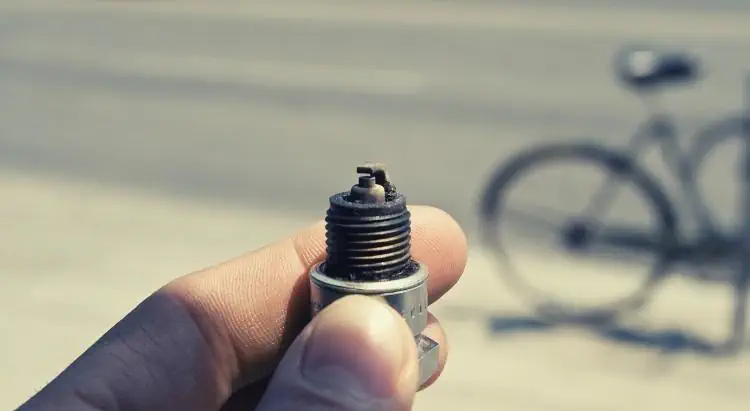
Are there spark plugs in chainsaws?
The answer is yes, chainsaws have spark plugs and they play a pivotal role in the proper functioning of the tool. As I have mentioned earlier, a spark plug is responsible for delivering electric current to the ignition system to ignite the air-fuel mixture in the cylinders.
If there wasn’t a spark plug in the chainsaw then the air-fuel mixture would not ignite and the chainsaw would not be able to run. Therefore, you can say that the spark plug is a very important part of the chainsaw.
Apart from that, as the spark plug of the saw gets old it loses its performance and as a result, the saw will gradually lose its power. Therefore, it is important to replace the spark plug of the chainsaw every now and then to maintain its performance.
Types of spark plugs in chainsaws
There are two types of spark plugs available in the market, and they are
- Standard Spark Plug
- Iridium Spark Plug:
As the name suggests, the standard spark plug is the most common one and is used in most chainsaws. However, the Iridium spark plug is relatively new in the market and is slowly gaining popularity among users.
The iridium spark plugs are known for their better performance as compared to the standard spark plugs. It uses iridium as the electrode material, which is a very strong and durable metal. The iridium spark plugs also have a smaller diameter as compared to the standard spark plugs.
This feature allows them to better withstand the high temperatures and pressures inside the cylinders. As a result, they have a longer lifespan as compared to standard spark plugs.
Where is the spark plug in a chainsaw?
Now that you’ve learned that a chainsaw has a spark plug, you might be wondering where is actually that located on a chainsaw?
The spark plug of the chainsaw is usually located on the side of the cylinder head. If you’re not sure where that is, then simply look for a small metal cap with a threaded hole in the center.
This is where the spark plug is located, and you can unscrew it using a spark plug wrench to replace it.
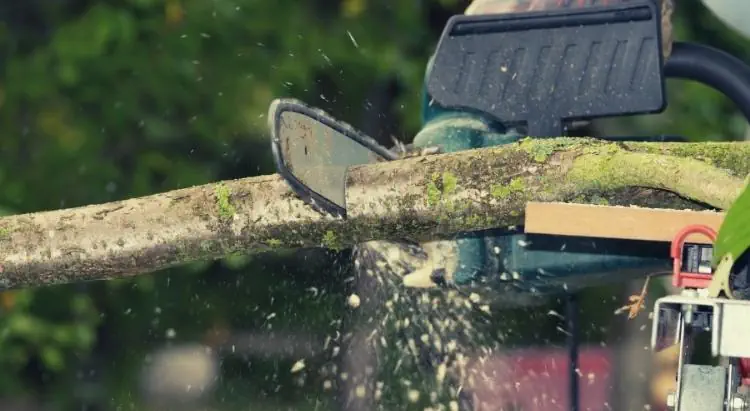
Are Chainsaw Spark Plugs Universal?
Another thing that most beginners may not be familiar with is whether spark plugs used in chainsaws are universal or not.
The quick answer is, no they are not. The spark plugs used in chainsaws are specific to the make and model of the chainsaw. However, there are some aftermarket options available that may be compatible with your chainsaw.
To explain it further, spark plugs have a few things such as the spark plug gap, heat range, terminal caps, resistance modules, and seats. Each saw has specific requirements for these properties and due to this, you can’t use just any spark plug in it.
Let’s discuss each of these properties in detail:
Spark Plug Gap
The spark plug gap is the distance between the electrode of the plug and the ground. It is important because it determines the size of the spark that will be produced.
If the gap is too large then the spark will be weak and may not be able to ignite the air-fuel mixture in the cylinders. On the other hand, if the gap is smaller then the plug will be able to produce a good amount of spark and will be able to easily ignite the fuel.
Heat Range
The heat range of a plug is how quickly it can transfer heat to the engine head from the combustion chamber. The combustion chamber should be within a specific range to prevent overheating issues and at the same time, it should be hot enough to burn the carbon and engine residue.
The heat range on regular combustion chambers for gas engines ranges from 500 degrees Celsius (932 F) to 850 Celsius (1562 F). It should be kept in mind that all spark plugs may have the same visible features but different heat ranges. Therefore, using the one with an incorrect range can result in damaging the tool.
Terminal Cap
Some spark plugs come with a removable terminal cap that is good for engines with a low level of vibrations. On the other hand spark plugs used in engines that undergo high levels of vibrations usually lack it.
A loose terminal cap can result in an insecure connection causing an engine to stop working. As you may already know, a chainsaw produces a huge amount of vibration during its operation therefore, you must always choose a sparkplug with a fixed terminal cap.
Spar Plug Resistance Module
Another important thing to keep in mind when choosing a spark plug is the resistance module. The resistance module intercepts the flow of current and helps to soften the static electromagnetic field. Chainsaws feature an ignition module that uses electricity to work.
This module can be affected by the static electromagnetic field produced by a non-resistor spark plug. The interference of the static electromagnetic forces can malfunction a chainsaw’s ignition module. Therefore, it is best to use a resistor spark plug on a chainsaw to avoid such an issue.
Spark Plug Seats
The seat is the lower portion of the spark plug that helps seal the combustion chamber. There are two main types of seats available including a gasket seat and a tapered seat.
Gasket Seat: A gasket seat creates a seal with a crushed gasket as soon as the plug is tightened into the engine. It is most commonly used in chainsaws as compared to other gas-powered engines.
Tapered Seats: A tapered seat seals the chamber by a taper on the outer shell of the plug. It is rarely used on chainsaws and is most commonly used in vehicles and other gas-powered engines.
What Kind of Spark Plug Does A Chainsaw Take?
After the above discussion, you might also be interested in knowing what kind of spark plug a chainsaw take. The answer to this question is that it depends on the model and make of your chainsaw.
You can find this information in the user manual of your chainsaw or you can also ask the customer support of the company. Another way to figure out what kind of spark plug your chainsaw take is by checking the old spark plug.
The old spark plug can give you a good idea about the model and make of the plug. You can then use this information to buy a new one from the market.
What Size Spark Plug Does A Chainsaw Take?
The size of the spark plug is usually denoted by the letters “N” or “M”. The letter “N” denotes a smaller-sized plug while the letter “M” denotes a larger-sized plug.
The most common sizes that are used in chainsaws are 10mm, 12mm, 14mm, and 18mm. You can check the user manual of your chainsaw to find out what size spark plug it take.
How do I know if my chainsaw needs new spark plugs?
There are a few signs that can help you determine whether your chainsaw needs new spark plugs or not. These signs include:
- The chainsaw is taking too long to start.
- The chainsaw is producing too much smoke.
- The chainsaw is running rough.
- The chainsaw is lacking power.
If you notice any of these signs then it is most likely that your chainsaw needs new spark plugs. You should also keep in mind that the spark plugs of a chainsaw need to be replaced after every few months of use.
This is because the spark plugs can get fouled or damaged over time which can affect the performance of the chainsaw. Therefore, it is best to keep a few spare spark plugs with you so that you can replace them as and when needed.
How often should I change my chainsaw spark plug?
As we mentioned earlier, the spark plugs of a chainsaw need to be replaced after every few months of use. However, the exact time period depends on how often you use the chainsaw.
If you use the chainsaw on a daily basis then you might need to replace the spark plugs after every 2-3 months. On the other hand, if you only use the chainsaw occasionally then you can replace the spark plugs after every 6-12 months.
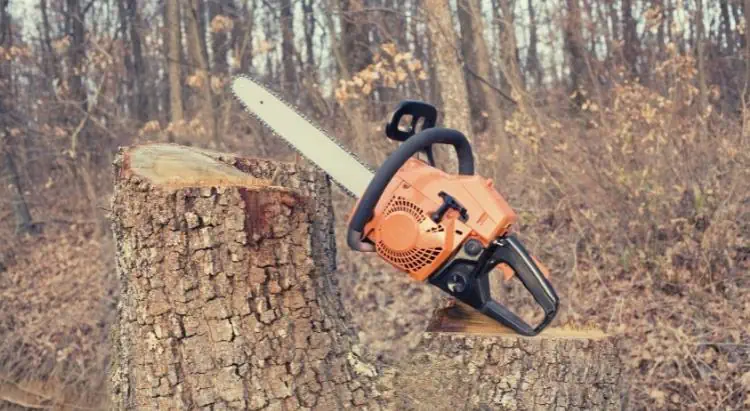
Can I clean my chainsaw spark plug?
Yes, you can clean your chainsaw spark plug if it is fouled or damaged. However, we would recommend that you replace the spark plug instead of cleaning it.
This is because the process of cleaning a spark plug can be quite difficult and time-consuming. Moreover, there is also a chance that you might not be able to clean the spark plug properly which can affect its performance.
Can I adjust the gap on my chainsaw spark plug?
Yes, you can adjust the gap on your chainsaw spark plug if it is not set correctly. However, we would recommend that you take the chainsaw to a professional for this purpose.
This is because adjusting the gap on a spark plug can be a difficult and tricky process. Therefore, it is best to leave it to the professionals who know how to do it correctly.
How do you check for spark on a chainsaw?
There are a few ways that you can use to check for spark on a chainsaw. These methods include:
Checking the spark plug: You can remove the spark plug from the chainsaw and then check it for signs of damage or fouling. If the spark plug is damaged or fouled then it might be responsible for the lack of spark in the chainsaw.
Checking the ignition system: You can also check the ignition system of the chainsaw for any damage or defects. If there is something wrong with the ignition system then it might be responsible for the lack of spark in the chainsaw.
Checking the spark plug gap: You can also check the spark plug gap to see if it is set correctly. If the gap is not set correctly then it might be responsible for the lack of spark in the chainsaw.
These are some of the ways that you can use to check for spark on a chainsaw. If you cannot find the source of the problem then we would recommend that you take the chainsaw to a professional for further diagnosis.
Final Words
Do chainsaws have spark plugs? the answer to this question has been explained in this article in detail. Apart from that, I’ve also mentioned some tips that can help you determine whether your chainsaw needs new spark plugs or not.
I’ve also detailed how often you should change your chainsaw’s spark plugs and what to do if they become fouled or damaged. Furthermore, different types of spark plugs have been discussed in detail. Finally, this article also explains how to check for sparks on the chainsaw.
I hope this article was helpful and informative. If you have any questions or comments then please feel free to leave them down below.
Thank you for reading!

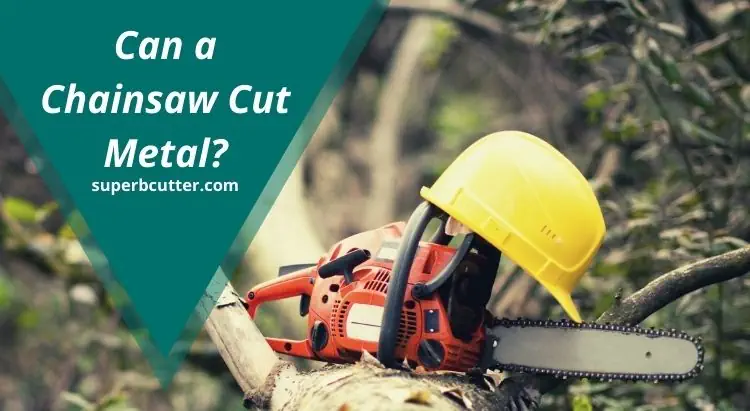


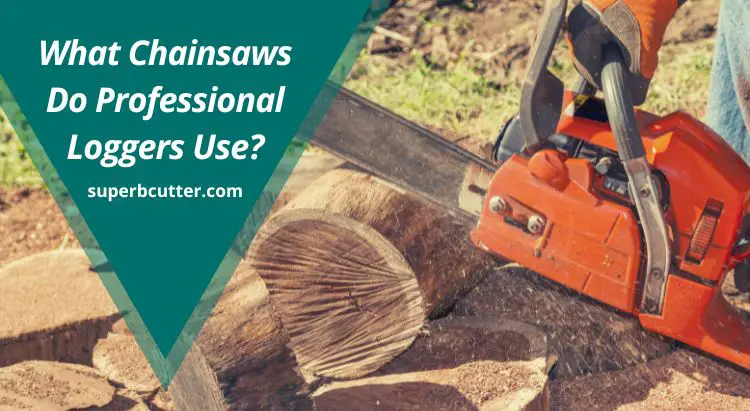
![Why Do Chainsaws Have Spikes? - [Beginner's Guide] 9 Why Do Chainsaws Have Spikes? – [Beginner’s Guide]](https://www.superbcutter.com/wp-content/uploads/2022/07/Why-Do-Chainsaws-Have-Spikes.webp)
![Can a Chainsaw Cut Through Dirt? [Read This First] 10 Can a Chainsaw Cut Through Dirt? [Read This First]](https://www.superbcutter.com/wp-content/uploads/2022/06/Can-a-Chainsaw-Cut-Through-Dirt.webp)
